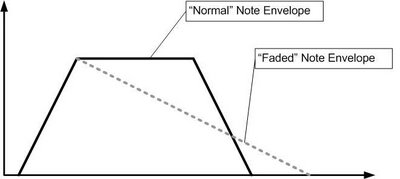
Exercise:
To better understand the fade, lets try the “Long Blow” exercise combined with a fade. To do this, cover the top three holes of the flute. Take a breath and blow a long steady note on the flute. Next, try to blow the same length of note, only decrease the volume of the note at a steady rate until there is no more sound coming from the flute. This is a fade! Practice this until you can fade both long and short notes.
Alternatively, start with a short fade on a note and play progressively longer fades with the same note. With each new note increase the time to fade to silence but play the fade in way that the decrease in sound is continous (linear) from start to end.

This Playing Tip is licensed under a Creative Commons Attribution-NonCommercial-ShareAlike 2.5 License.

No comments:
Post a Comment